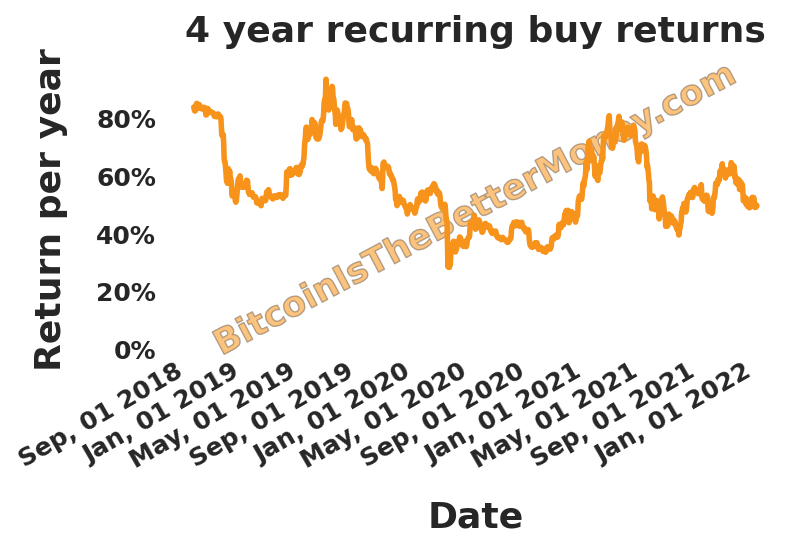The bitcoin savings plan
Automated reccuring daily purchases of bitcoin over the last four years and holding bitcoin until today would have compounded your money at a rate of nan % per year, which would have been an nan fold increase of your purchasing power.*

To visualize how returns have changed over time for reccuring automated purchases (also known as Dollar Cost Averaging, DCA), we have plotted 4 year rolling compound returns for you, going back a couple of years. This website updates the 4 year recurring buy return calculation daily, and while we're at it, the plot is also updated daily.
Nobody knows the future. At bitcoin is the better money, we think that bitcoin will continue to gain market share against government currency. If that turns out to be the case, we can reasonably assume past return trends to continue as new users and more money is attracked into the bitcoin network. Of course, nobody knows the magnitude of this trend and your guess is a good as ours with regards to how big the return figures will be going forward.
We believe that it is quite likely, that the past trend will continue into the future, which is why we've made this website to educate the public about bitcoin:
Why is it money? What makes it the better money? How can money exist outside the government? Read my blog on the subject.
Have you considered signing up for a bitcoin savings plan? If you set up one with Swan bitcoin you get 10 dollars for free with my referral.
If you're curious about how lump sum purchases have performed instead of recurring buys go here for the answer.
This website was made and is maintained by Jogi. Follow me on twitter here: @proofofjogi. You can directly support bitcoin is the better money dot com by leaving me a tip. Thank you for your support.
*For the recurring buy calculation, we simulated daily purchases of bitcoin using the same dollar amount every day over a rolling 4 year time period. We then valued the final bitcoin amount in dollar terms using the last day's exchange rate and divided that number by the cost basis. We then used the Compound Annual Growth Rate (also known as CAGR) for the return calculation, which was nan percent per year for an automated purchasing program over the previous 4 years.
